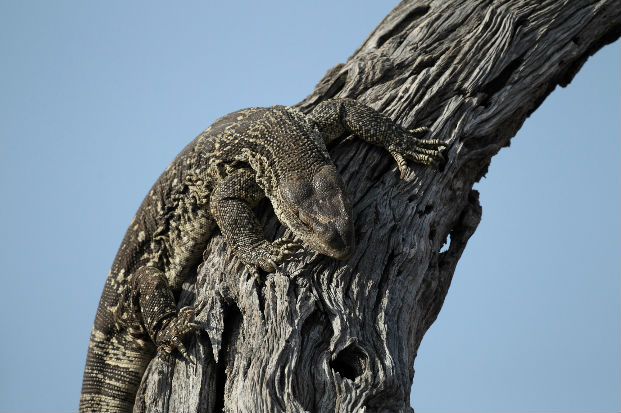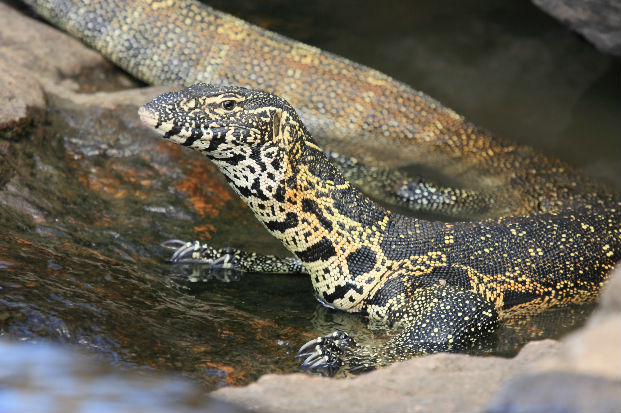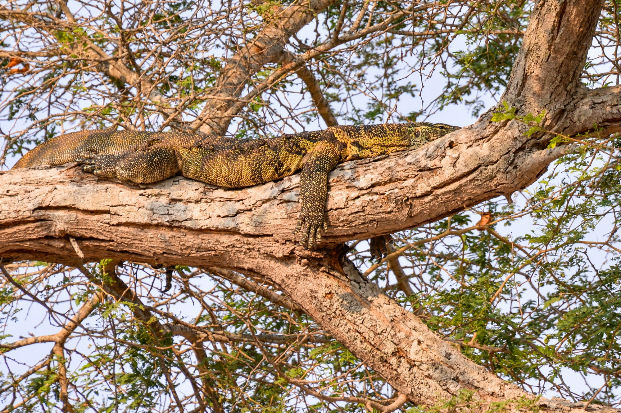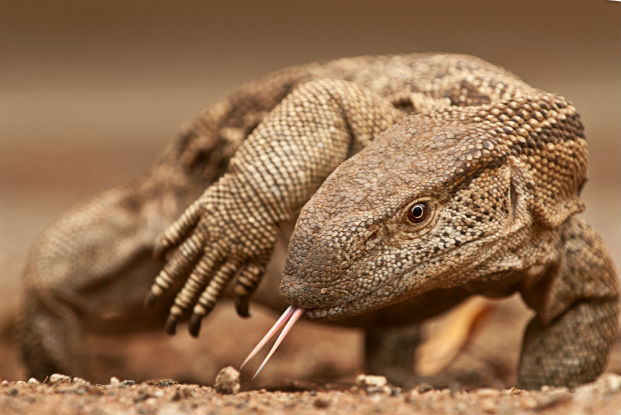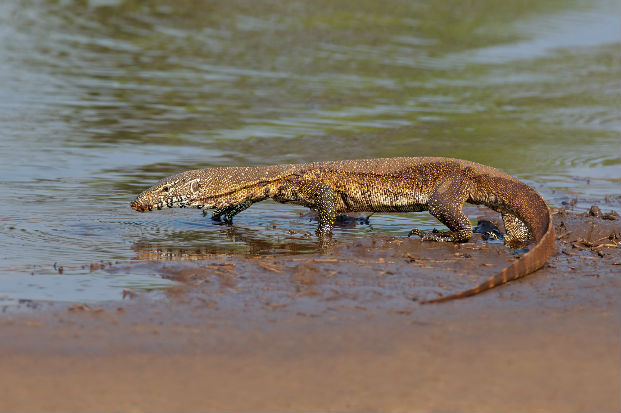Monitors are lizards, the most diverse group of reptiles with over 4,560 species known worldwide. There are two species of monitor that can be found in the lowveld, the water monitor (Varanus niltoticus), the largest lizard in southern Africa and the rock monitor (Varanus albigularus). Both species are diurnal and fond of basking on rocks in the morning sun.
African rock and water monitor facts
1. Tick infestations
The rock monitor is prone to tick infestations of the nostrils and nasal passages. In some circumstances this can be so bad that it actually causes death.
2. Water monitor reproduction
After breaking open a small hole in an active termite mound the water monitor will lay 10 to 60 eggs. The hole is small enough so that the termites can repair the breach and thus the eggs will be protected and kept at a constant temperature.
3. Playing dead, aka thanatosis
Rock monitors will sometimes play dead when attacked by animals. This, known as thanatosis, is done so that the aggressor loses interest. When this happens the monitor will get to its feet, move off slowly and then bolt for cover.
4. Monitor self-defence
When cornered the reptile stand on straightened legs to appear larger, hiss loudly, thrash out with their tails, bite with a vice like grip and, if grabbed evacuate the contents of their rectal opening.
5. Means of escape
If a rock monitor is threatened it will use its long sharp claws to propel itself up a tree. If pursued it will dive out of the tree onto the ground where it will get up and bolt for cover elsewhere.
6. Organ of Jacobson
Unlike other lizards they have a forked tongue similar to that of a snake. This flicks in and out to pick up scent molecules which it brings back into its mouth to analyse using a special piece of apparatus called the organ of Jacobson.
7. Sense of smell
Their tongue and that of a snake are forked so that it can best determine where a smell is coming from due to the scent molecules that land on either side.
8. Holding breath
Water monitors can stay under water for up to an hour but will usually surface much sooner.
Vote for the fact you find most fascinating
If a rock monitor is threatened it will use its long sharp claws to propel itself up a tree. If pursued it will dive out of the tree onto the ground where it will get up and bolt for cover elsewhere.
The tongue of a monitor and a snake are forked so that it can best determine where a smell is coming from due to the scent molecules that land on either side.
After breaking open a small hole in an active termite mound the water monitor will lay 10 to 60 eggs. The hole is small enough so that the termites can repair the breach and thus the eggs will be protected and kept at a constant temperature.
When cornered monitors stand on straightened legs to appear larger, hiss loudly, thrash out with their tails, bite with a vice like grip and, if grabbed evacuate the contents of their rectal opening.
The rock monitor is prone to tick infestations of the nostrils and nasal passages. In some circumstances this can be so bad that it actually causes death.
Monitors, unlike other lizards have a forked tongue similar to that of a snake. This flicks in and out to pick up scent molecules which it brings back into its mouth to analyse using a special piece of apparatus called the organ of Jacobson.
Water monitors can stay under water for up to an hour but will usually surface much sooner.
Rock monitors will sometimes play dead when attacked by animals. This, known as thanatosis, is done so that the aggressor loses interest. When this happens the monitor will get to its feet, move off slowly and then bolt for cover.


